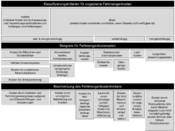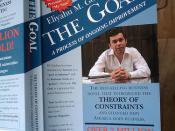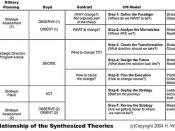THROUGHPUT ACCOUNTING AND THE THEORY OF CONSTRAINTS
A Summary of Goldratt's Argument
During the 1970's Eli Goldratt developed a new approach to production management which he called Optimised Production Technology (OPT). This approach provided a logical analysis of manufacturing issues and argued that in order to increase the throughput (defined as sales less material costs) of a plant, production managers needed to identify and focus attention upon the ultimate constraint of a plant's output. This is often described as a bottleneck. This bottleneck resource must be distinguished from non-bottleneck resources with an aim to identify and remove it.
Goldratt viewed the rhythm of production in a factory as to work to the beat of a drum using a drum-buffer-rope theory to explain how production should be organised. The rhythm of production flow is dictated by the bottleneck which is usually a machine whose capacity limits the throughput of the whole production process.
If the removal of the bottleneck is not possible the bottleneck must be utilised at all times to ensure the bottleneck never slows plant's output. A time margin or 'buffer' of parts in front of the bottleneck allows checking before parts reach it so that rejects do not take up constraint time. Alternative routes for some parts can be investigated so that parts are not processed on the bottleneck unnecessarily. A schedule for releasing raw materials to the floor is required with the 'rope' derived according to the drum and buffers. Its mission is to ensure the proper subordination of the non-constraints with the results providing a smooth and continuous flow of materials through the plant with minimum disruptions.
The management and idle time of non-bottlenecks is not detrimental to the efficiency of the organisation as they have excess capacity and if they were utilised at all times...


